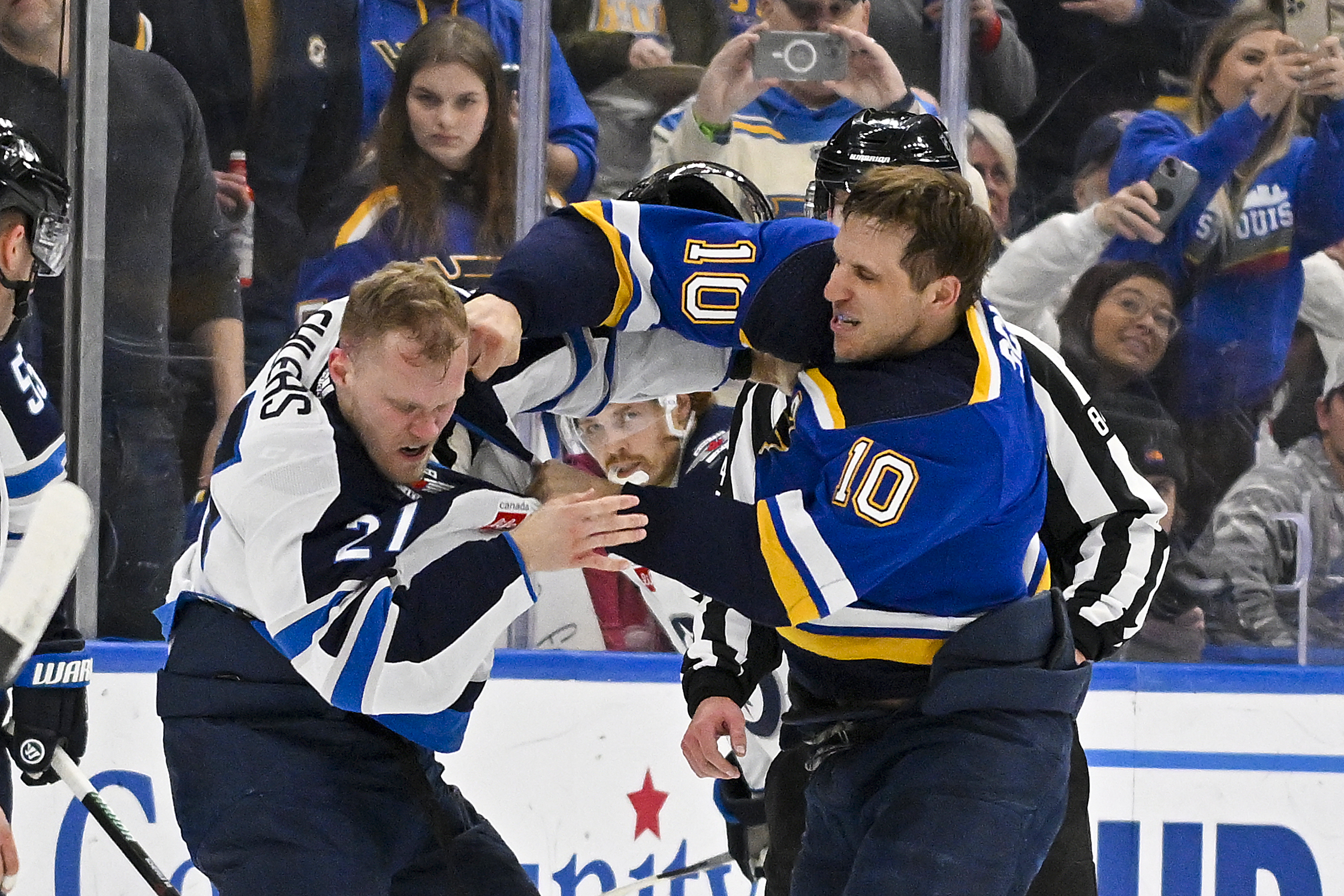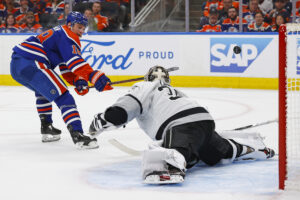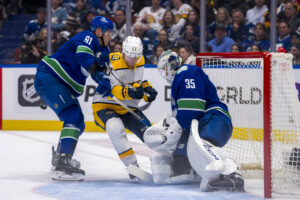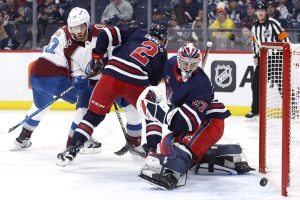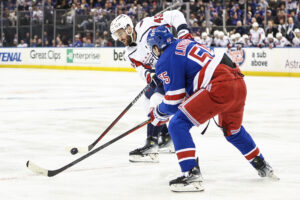Last week, the Quebec Major Junior Hockey League, a member of the Canadian Hockey League’s network of three major junior hockey leagues, announced plans to entirely prohibit fighting within the league following an assembly vote, in a mission primarily spearheaded by Quebec Minister of Sport Isabelle Charest and former NHL enforcer Enrico Ciccone.
While no formal vote will occur until June, the measure ensuring its prohibition will likely be ratified, with heavy support from Hockey Canada’s board of directors and Charest’s ability to take direct legislative action if needed.
QMJHL Set to Entirely Ban Fighting
While internal reactions within the sport appeared reasonably supportive with few objections, online responses from hockey fans around the continent were critical and seemingly reactionary. Fans expressed perceived ominous warnings of a future in which the sport will be ‘watered down’ due to a lack of fighting. Some even fear this decision could cascade to the top professional level on a slippery slope.
Regardless, fighting within the sport and its entertainment appear so fundamentally intertwined within the game any discussion of its exit or removal seems nearly insane. It makes sense, considering the historical abundance of jokes, such as stating fans went “to a fight, but saw a hockey game broke out.” Ultimately, however, this has rapidly changed in the last decade especially, and discussions on the actual relevance of fighting with the sport are truthfully necessary as the octane of the sport continues to grow in quality.
To best understand the significance of these intentions from the QMJHL on a long-term scale, understanding the role of fighting within the sport and its trends will best evaluate hockey fans’ claims and concerns in Canada and the United States.
Frequency of Fighting in the Modern Game
Evolution of Fighting
Fighting has been a critical piece of hockey and its culture since the NHL’s establishment in 1917 (106 years ago). Throughout the sport’s history, many players have established roles on NHL teams as enforcers of different purposes, most famously perhaps that of Marty McSorley‘s role as the bodyguard of Wayne Gretzky on the 1980s Edmonton Oilers teams.
Hockey has progressed since the Oilers dynasty, going through periods of defensive and now offensive greatness. According to HockeyFights, the NHL’s rate of fights/game has significantly decreased since the 2011-12 season. It drops from 0.44 to 0.25 this season. Dating back to the 2000-2001 season, the rate was 0.56 fights per game, with a peak average per game hitting 0.65 the next season; the current season total is approximately a 61 percent decrease from the peak total. In a March 6th report from the NHL, fighting has decreased from 0.78 to just 0.07 in the same span. The NHL, alongside the OHL and WHL, have measures already implemented to drastically disincentivize fighting, such as the three-fight rule, which suspends players after three fights for two games after each fight following the third.
Why Fighting is Declining
On a broad scale, the NHL’s attempts to primarily highlight the skill and finesse of the sport, especially post-lockout, is likely the most significant contributor to this drastic decrease in fighting. As the skill ceiling of the league has increased, enforcers have lost their role, entirely exposed as liabilities in a game that far out-matches their speed and skill capacities. At the junior level, the quality of training and development is increasing, allowing more high-skill talent to make their way into the NHL. In return, the amount of fighting within the CHL has decreased rapidly, allowing the NHL to produce more high-end talent out of the program.
In a more pragmatic scope, modern research has highlighted the levels of danger and stress placed upon athletes’ brains in contact sports such as hockey. Most notably, this is discussed with the autopsies of deceased athletes diagnosed with CTE. At any level, this is worrisome; but it is especially so at the junior level, with the age levels allowed within the league (16-21) still developing intellectually. Thus, measures like those described above are vital to limiting this stress to the degree the QMJHL can truthfully control.
True Importance and Relevance of Fighting in the Modern Game
Importance of Fighting
Often when discussing fighting within the sport, several fans point to a fighting adage and something paradoxical; fighting, a violent tradition, makes the game safer overall. Curiously, the sport’s violence has proportionally decreased in the same time frame, likely due to more enforced and better-defined safety measures at youth, junior, and professional levels. Former OHL and ECHL player Nick Betz analyzed a potential correlation between game safety and fighting in the NHL in 2019, finding no significant empirical evidence to suggest any causation between the two variables.
Regarding a more theoretical, principled approach, fighting could be more questionable at any level but the professional level. The QMJHL, OHL, and WHL are all fundamentally high-end development hockey leagues intended to push players into the NHL at an elite level directly. Fighting, already rendered essentially obsolete between high-end skill-posing enforcers as pure liabilities and aggressive incentives geared against it, no longer has a purpose at the junior level entirely.
Relevance of Fighting
The only significance fighting has of any benefit compared to the severe risks it bears is the entertainment value, which is fundamentally secondary in the CHL. Therefore, no relevance of fighting has clear significance in the junior game. The NCAA has already understood this, with similar restrictions at the D1 and D3 levels. Even as the sport moves towards a focus on promoting its high-end skill and octane, it attempts to use fighting as an appeal to casual fans, which will become increasingly unsustainable as they continue to market talent but create a massive disconnect.
Fighting cannot be the primary mode of promotion for the sport’s growth, considering the decreasing rate at which it occurs and the massive opportunity presented by the oozing talent of the NHL’s elite players.
Regarding attendance, the NHL has improved from “a low of 16,549 in 2004 to a peak of 17,768 in 2013, before settling between 17,400 and 17,500” from 2017-2020. In the same period, fighting has drastically decreased, according to this study from Frontiers in Sports and Active Living. Thus, this destroys another critical narrative regarding the importance of the fighting tradition in the sport. Also, entertainment cannot reach the importance of player safety; the QMJHL has properly recognized its role and abilities to limit the possible damage sustained by its athletes, ensuring a better version of the game.
Fighting in Hockey Long-Term
As the sport continues to develop alongside revolutions in athlete development (regarding nutrition, physical training, mental training, strategy, and more), the skill ceiling will continue to rise, and the ability of the average player will expand. Hockey will continue toward this trajectory, leaving fighting select in the NHL. This trajectory will make fighting unnecessary and counterproductive at the junior and college levels. The NHL must recognize this and detach from the tradition. Although, as professionals, Fighting may need to be reduced rather than removed. The NHL must understand this to perceive the positive importance of this decision from the QMJHL; professionals can take more risks than junior hockey players (16-21) cannot.
In making this decision specifically, the QMJHL has a much lower probability of directly affecting any NHL decisions on fighting. Regarding the relationship between the NHL and their development leagues, the ‘slippery slope’ many claims will occur will not likely influence the NHL, considering how embedded it is in the major leagues. There is continual support of the tradition from the board of directors. The difference in play style between the two leagues will allow the change to benefit the QMJHL as one of the top developmental leagues.
Conclusion
Truthfully, it is unreasonable for a dying construct that loses relevance and never was essential to be why a fan loves the game. If the tradition of fighting was why they watched hockey, the sport itself is not their true passion. Fighting does not have to disappear completely, but frustrations at junior leagues such as the QMJHL for voting as such is a result of a lack of understanding of the league’s true purpose. In the NHL, there’s no reason fans cannot enjoy fights; however, if they should be involved in the means for the popularity and development of the game should always be questioned.
MAIN PHOTO: Jeff Curry-USA TODAY Sports


